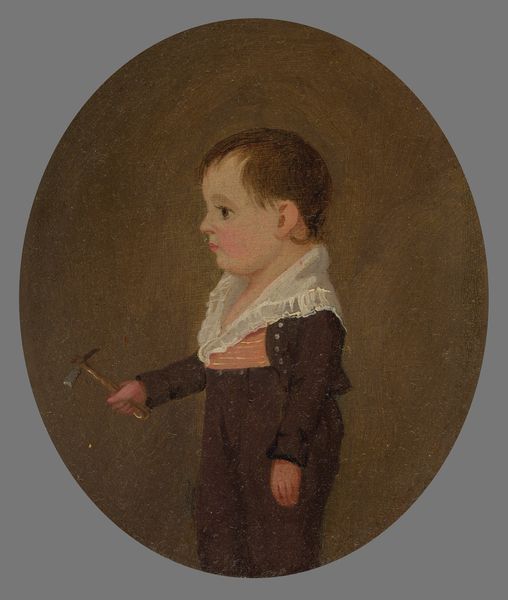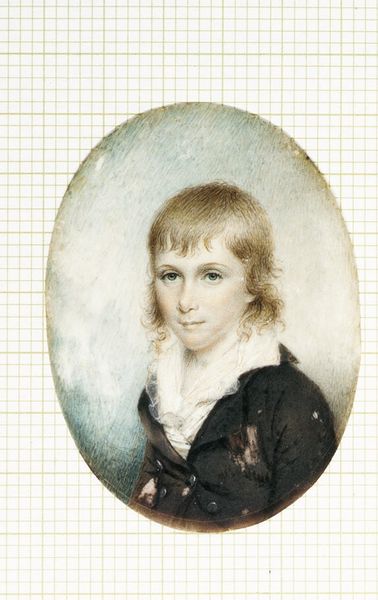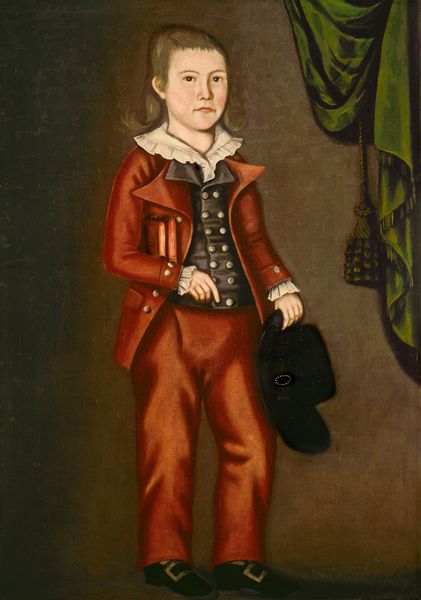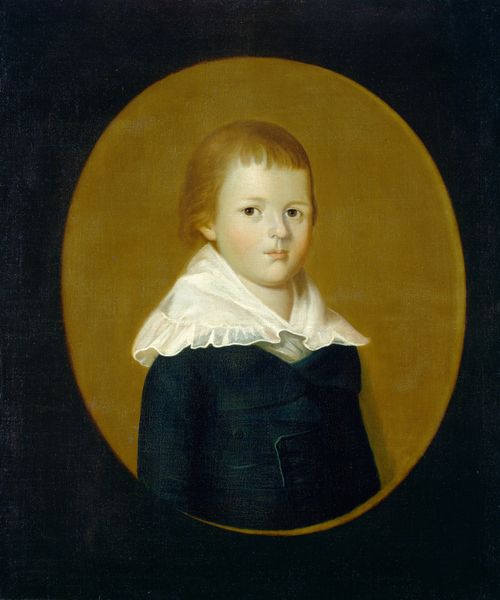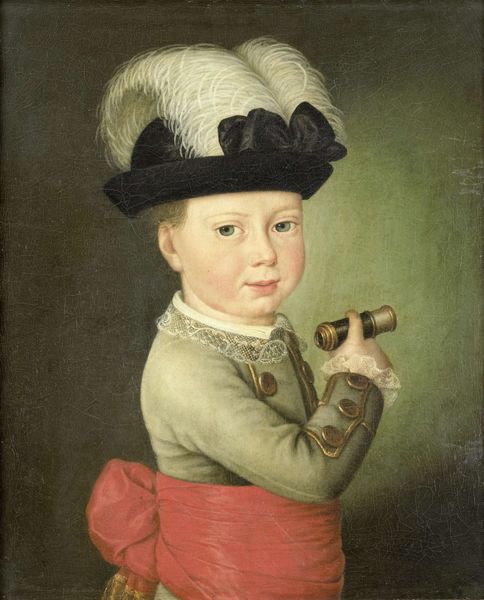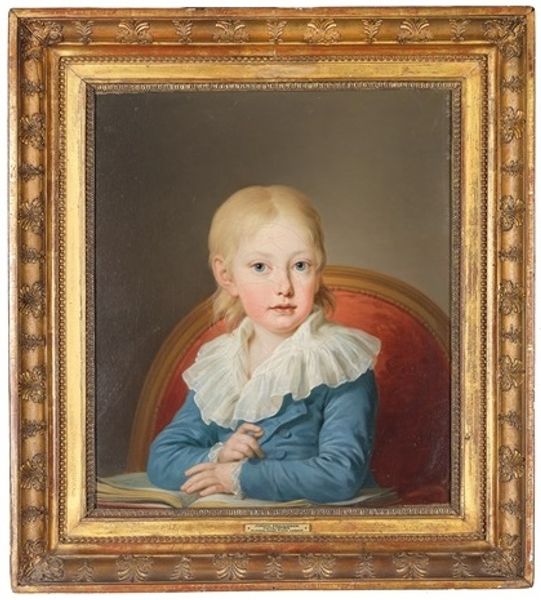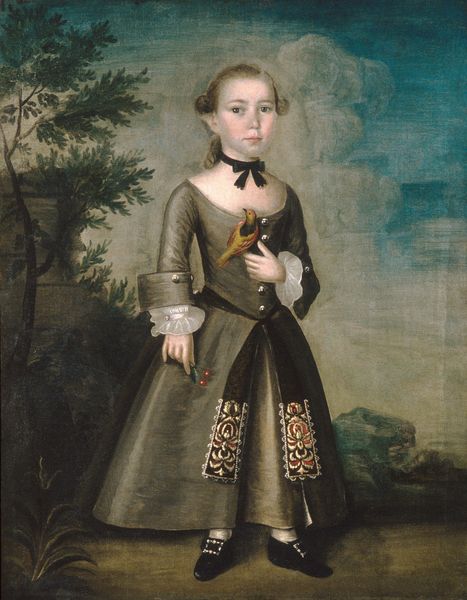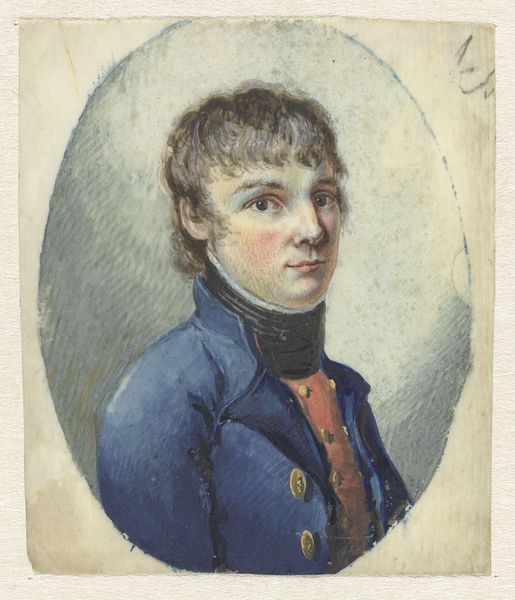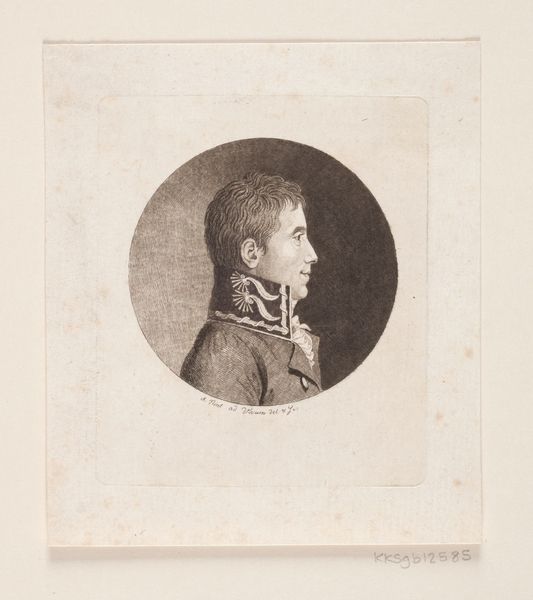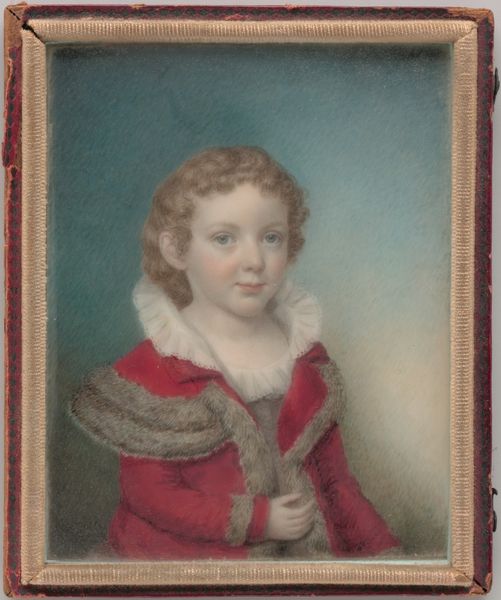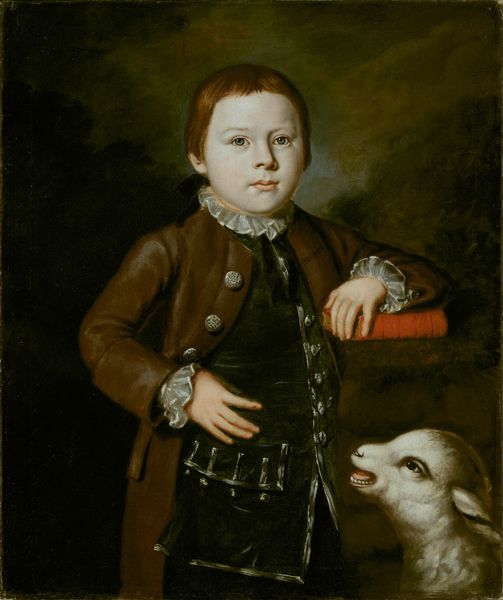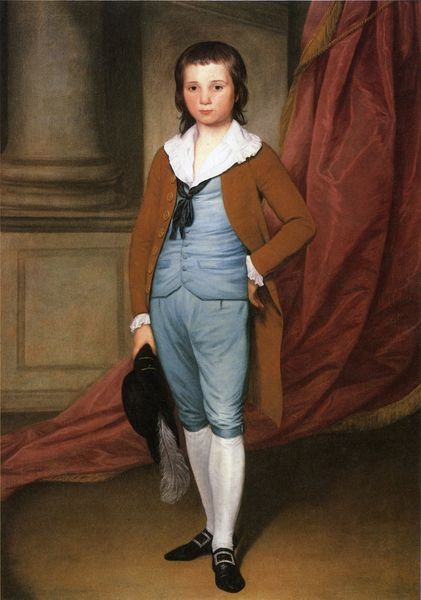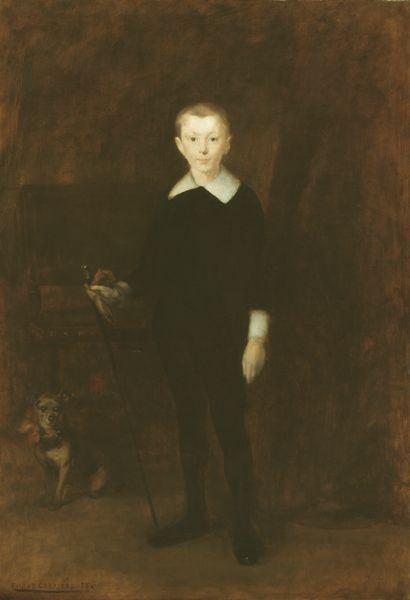
oil-paint
#
portrait
#
oil-paint
#
painted
#
oil painting
#
romanticism
#
genre-painting
#
academic-art
#
watercolor
#
realism
Dimensions: overall: 22.9 x 17.2 cm (9 x 6 3/4 in.) framed: 33.7 x 28.6 x 4.3 cm (13 1/4 x 11 1/4 x 1 11/16 in.)
Copyright: National Gallery of Art: CC0 1.0
Editor: Here we have Jacob Eichholtz's oil painting, *Joseph Leman*, created around 1808. I’m struck by the sitter’s contemplative expression and how he is framed almost like a cameo. What can you tell me about the painting's cultural or historical context? Curator: Eichholtz worked as a portrait painter during a time of increasing social stratification in the new American Republic. The late 18th and early 19th centuries saw a growing demand for portraiture among the emerging middle class as a way to assert their status. Consider the boy's fashionable clothing. Editor: It's quite detailed! He looks to be wearing a navy blue jacket trimmed with white embellishments. Curator: Indeed. Such portraits weren't simply likenesses; they communicated social standing, wealth, and aspirations. Eichholtz painted many portraits for prominent families. How does the image and context shape our perception of this young boy? Editor: It almost feels as though he is making a statement through the painting, about himself and his family. Is it fair to say this painting showcases the political role art played? It told a very specific story, beyond simply depicting what someone looked like. Curator: Exactly. The seemingly simple act of portraiture in this period becomes a powerful tool for social and political messaging, especially concerning class and family legacy. Consider how such images might be viewed then and how we view them now, over two centuries later. Editor: It is almost like visual propaganda, for a specific elite, a means for communicating the legacy of a person or a family. This conversation has really helped me understand the intersection of art and socio-political forces at play in early 19th century America! Curator: And understanding that intersection helps us appreciate not just the aesthetic qualities but also the societal weight these images carried and continue to carry today.
Comments
No comments
Be the first to comment and join the conversation on the ultimate creative platform.
